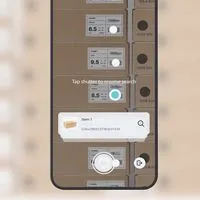MatrixScan Find: Find the Future of AR in the Present
| Products & Solutions
:format(jpeg))
When did you last waste time trying to find something? Last week? Yesterday? Perhaps even this morning?
We all know the frustration of not being able to find a product in a supermarket, the right tool in the shed, or an essential piece of school equipment. Now imagine that same frustration, but multiplied hundreds of times every day.

Across retail, third-party logistics companies and fulfillment centers, frontline workers struggle to find the items they need to pick, pack or deliver. It’s especially hard if they’re searching among similar-looking items such as brown cardboard boxes, spices, cosmetics, shoe boxes, DIY items, clothes or medicines.
And, of course, this isn’t just personally frustrating. From a business perspective it’s chronically inefficient, prone to error and damaging to customer experience. We’ve all waited in a queue while someone searches for a parcel, or been frustrated by an error in an online order.
But perhaps these times are over. Meet MatrixScan Find, our newest addition to the Scandit Smart Data Capture Platform. Using augmented reality (AR) on smartphones, it instantly highlights the product, parcel or pallet a frontline worker or customer is searching for.
MatrixScan Find shifts tedious manual searching to technology by combining Scandit’s fast, accurate barcode scanning with a pre-built AR interface. It can be deployed with just a few lines of code to accelerate processes, reduce or eliminate human error and get new hires up and running fast.
To create an end-to-end scanning workflow, MatrixScan Find also integrates seamlessly with SparkScan – our pre-built barcode scanner that fits on top of any smartphone application.
Why Apple’s Vision Pro shows that AR will power the digitization of traditional industries
The digitization of traditional industries (such as retail, manufacturing, supply chain, healthcare and transportation) will rely on AR solutions such as MatrixScan Find.
It’s significant, although in retrospect not surprising, that Apple’s new Vision Pro headset is AR/VR (or, as Apple call it, spatial computing), rather than standalone VR.
Tim Cook has repeatedly said he believes AR will be far larger than VR – and the Vision Pro’s central claim is that it seamlessly blends digital content with your physical space.
:format(jpeg))
Image credit: Apple
Traditional industries have a heavy focus on tangible assets (such as inventory or equipment), and physical operations (such as warehouse and store operations, patient care or last mile delivery). They also represent 75% of the world’s $300 trillion GDP.
Fully immersive VR will undoubtedly play a role – in, for example, training. But overall, digitization here depends far more on modernizing how frontline workers, customers and businesses can interact with the real world.
This makes AR, which blends digital assets with the physical world, a much larger opportunity.
Smartphones are today’s testing ground for enterprise AR
AR is also attractive because, while the Vision Pro is undoubtedly an important development long term, smartphones offer an easy entry point today. (The mobile augmented reality market is already estimated to be worth over $20 billion.)
Much as Netflix started off sending DVDs out to customers while streaming technology came of age, smartphone AR is fertile ground for testing and iterating applications that will ultimately end up on wearable devices.

Start your AR journey today
Start testing the benefits of AR today with MatrixScan Find on smartphones.
… but designing enterprise AR for smartphones can still be challenging
Smartphones address many adoption barriers to AR, such as cost, integration, user acceptance, security and scalability. However, designing enterprise AR applications for smartphones is not always straightforward.
In a consumer smartphone AR experience such as Pokémon Go, the success measure is generally how long people spend doing the experience. Success for enterprise AR, however, is often the exact opposite.
This creates a different set of challenges and far less tolerance for sub-optimal performance.
:format(jpeg))
In the example of order picking, for AR to work, it needs to attach real-time system information (what items to pick) reliably, consistently and intuitively to tangible products on shelf. To ensure adoption by time-pressured order pickers, it needs to “just work.” All this takes time to develop.
How to test the benefits of enterprise AR – without extensive development time
We’ve built and optimized MatrixScan Find to find products quickly, reliably and intuitively. This means that businesses can explore the benefits of enterprise AR, without the need to spend extensive time on development and testing.
MatrixScan Find draws on over a decade of experience developing practical computer vision and AR applications.
For example, we understand from our experience with Japan’s OK Corporation how high the bar is for an acceptable level of accuracy in real-world business conditions. OK Corporation had a picking error rate of 6% (or around 1 in 20 items), but they were looking to improve picking accuracy to close to 100%.
This high bar has important consequences. A computer vision solution that accurately identifies objects to pick 95% of the time might sound good. But actually, this performance isn’t good enough for many real-world situations.
And this makes barcodes, for now at least, a more reliable choice than image or text recognition for many situations. It also means that being able to handle the edge cases that happen in real-world conditions (such as low light) is not merely a nice to have but a necessity.
We also know, from developing AR apps for companies such as Weeshop and JISP/NISA, how important observational research is to understand the real physicality of how frontline workers interact with physical objects and smart devices. Our years of research in this area are also packaged into MatrixScan Find’s AR user interface.
Finding the future of AR in the present day
“Many compelling products and new technologies come with a-ha moments,” angel investor and VC Sarah Drinkwater recently wrote, “like the first time I entered a prompt on Midjourney or pressed a button on Uber and a taxi came around the corner. It feels like magic. The future slides into view.”
Despite the hype, the success of AR isn’t really about the specs of the Apple Vision Pro. It’s about finding those a-ha moments, when a quite basic problem that seemed impossible or unimaginable to fix suddenly becomes – fixable. Changeable. Like ordering a taxi. Or like a frontline worker struggling to find a product, package or pallet.
In years to come, we’ll see AR wearables increasingly being used to connect the frontline. And we can start that journey here, today, with the technology we already have in our hands – and just a few lines of code.
Fed up of wasting time finding things? We are too.

Find anything fast with AR
Instantly highlight the product or package you’re looking for using MatrixScan Find
This product is patent protected.